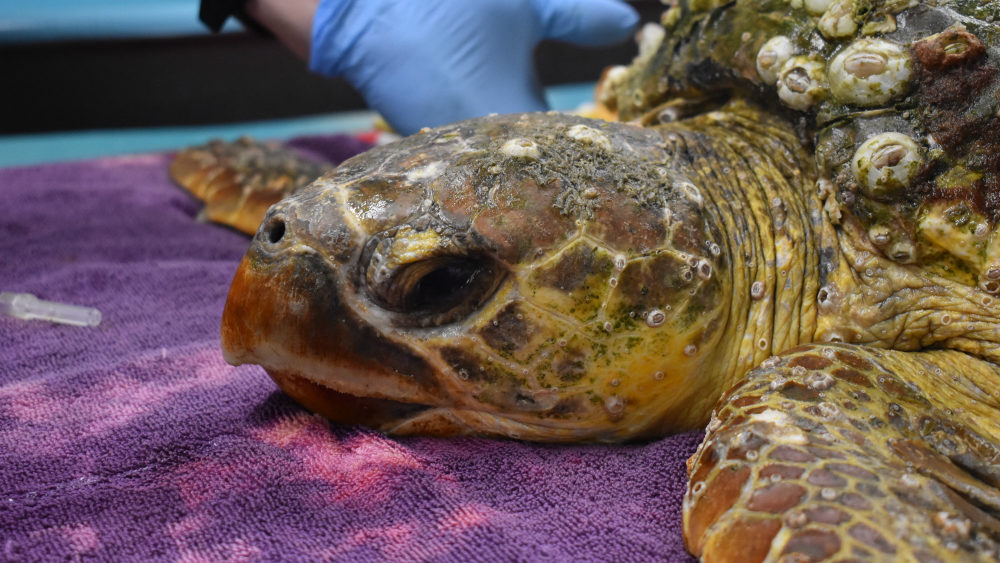Loggerhead (Caretta caretta)
Stranding Location: Myrtle Beach, SC
Arrival Date: 06/07/2018
Age: Juvenile
Weight: 16.82 kg (37 pounds)
Case History
Aragog was spotted just beyond the breakers by beachgoers who noticed this little loggerhead was struggling to swim and keep his head above water. Lifeguards and Animal Control kept a close eye on the turtle’s location until North Myrtle Beach Sea Turtle Patrol volunteers Ingrid, Matt and Michelle arrived at the scene. The volunteers waded into the water and safely brought him ashore. Aragog was very lethargic, thin and had a heavy epibiota load (barnacles, algae) on the surface of his carapace or top shell, all indicators of debilitated turtle syndrome (DTS). Linda Mataya, South Carolina Department of Natural Resources volunteer transporter, quickly arrived and brought Aragog all the way to the Sea Turtle Care Center (STCC) where he would receive the lifesaving medical care he needed.
Treatment
When Aragog was admitted to the STCC, staff immediately knew this patient was in dire straits and needed to be treated as quickly as possible. About the only good thing going for Aragog was that he had a decent heart rate, but his blood work was incredibly poor. Aragog’s blood work indicated that he was severely anemic, with a low percentage of red blood cells and essentially no protein present in his blood. All of which are integral in regulating the oncotic pressure within the blood stream. When a patient has low total protein, water is not being regulated within the circulatory system efficiently. Hetastarch is administered to help pull fluids into the vascular system, and works similarly to the blood protein albumin, which Aragog was severely lacking. Aragog also had no detectable glucose level, so fluids with some dextrose (simple sugar) were administered under the skin, along with some vitamins to help rehydrate and reenergize him and give him some energy. Due to Aragog’s anemia, he was also put on vitamin K and iron injections. DTS patients essentially have no immune systems and since Aragog is considered a patient with severe DTS he was started on two different antibiotics to help combat any infection present within his body. After triage, Aragog was left to rest comfortably on a waterbed made of foam and shallow freshwater overnight. Aragog was named for Hagrid’s pet spider in Harry Potter.
Updates
June 13, 2018: Aragog is the most critical patient in our care. Aragog has received daily fluids, and hetastarch and is now receiving peripheral parenteral nutrition (PPN), intravenous nutrition. PPN is broken down simple sugars, carbohydrates, and fats that are more easily absorbed and digested by the body. We usually only use PPN for patients who are very critical. Aragog was stable enough to be moved into a tank with very shallow water down in our ICU for a few days after his initial admit. We are pulling out all the stops for Aragog, and we’re hopeful that he will pull through, but his prognosis is highly guarded.
June 24, 2018: Despite our best efforts, Aragog was found in his tank unresponsive on Friday morning. The vet staff pulled out all the stops, and gave him the best possible chance. He was one of the most severe cases of DTS that we have seen make it more than 24 hours.


